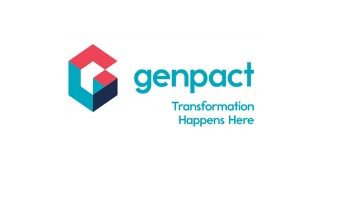“Increased adoption of open-source technology will continue to enhance existing open-source software” – Athitya Kumar, Senior Software Engineer at Intuit
 How does Intuit strengthen a platform of culture and collaboration in innovation throughout the organization?
How does Intuit strengthen a platform of culture and collaboration in innovation throughout the organization?
At Intuit, our principles of Customer-Driven-Innovation (CDI) and Design-for-Delight (D4D) have helped us nurture the culture of innovation for several decades. While these principles provide clarity and guidelines, the passion every employee has for delivering unparalleled customer experiences is the key towards consistently building a highly collaborative organizational culture.
To scale a collaborative culture to 17K+ employees globally also requires organizational structure and commitments. At Intuit, we have a very successful trend of passionate employees leaning forward and establishing tech-communities to engage like-minded individuals and drive impactful outcomes for our customers and employees. Open-source is one such tech-community where technologists contribute towards building a strong mindset and skill set in the organization towards open-source technologies and best practices. Several programs are driven by this community including project identification for opensouring, educating on the process and technical how-tos for the first timers, spreading awareness on the benefits of open sourcing among other events. Hacktoberfest is one such event that is held every year during October globally across all Intuit sites. Not just the seasoned developers, but even the college graduates who are in the first year of their careers enthusiastically participate and contribute to this month-long effort of contributing to an open-source project of their choice. Experts also lend their hand in mentoring the first-timers during such events enabling the organization to build on our learn-teach-learn culture. The contributors take away exciting rewards and are also recognized company-wide.
Apart from this, Intuit also has a week-long event called Global Engineering Days (GED) which is an opportunity for technologists to use their voice and feel empowered to lead, contribute and solve big customer problems. During this time, technologists get to focus solely on areas of passion – a bug they are eager to fix, a feature they’ve wanted to add, a tool we need to integrate, a flow that needs fixing. Typically, engineers leverage GED for creating/improving any of their OSS projects, coming up with new ideas and implementing it, or just enhancing their technical prowess by exploring new technologies. We have the next GED coming up in May 2023, and we’re really excited to see the amount of innovation that comes out of it!
How can organisations successfully adopt an open-source mindset collaboratively?
Transforming an organization towards open-source culture is a humongous task. It could also be a delight if we have clarity on the benefit to customers and the employees. We take pride in helping our employees understand what’s in it for them and our customers by adopting open-sourcing.
On the customer front, speed to deliver customer benefit is significantly fueled by emphasizing re-usability of all capabilities. We are a capability-driven company where every team builds capabilities that provide customer benefit.
On the employee front, capabilities that are aligned with open-source principles also offer flexibility for employees across the organization to contribute towards building newer functionalities that can be scaled to multiple product offerings at speed.
At Intuit, these mindsets are tightly coupled with architectural principles and leadership sponsorship to ensure a high say/do ratio.
Capability definition and ownership helps us deliver customer benefit at speed as we emphasize re-use and avoid clones. We have guidelines on incorporating open-source principles while building these capabilities. We call it “inner-sourcing”. There are defined principles, goals and measures on how each of our capabilities are incorporating inner-sourcing guidelines. Building self-serve APIs (Application Programming Interfaces) with appropriate Continuous Integration, Continuous Delivery, Unit/Integration test coverage, documentation etc are just a few examples of how a capability can be ready for contributions from the rest of the organization.
As employees mature in building and contributing to the inner-source enabled capabilities, we have witnessed significant interest and passion towards open sourcing a few of these capabilities to extend the benefit to industry as a whole.
What challenges do organizations face in leveraging open-source technology among teams and individuals?
The first challenge in leveraging an open-source technology is to explore the OSS project for their specific use-case, through a Proof of Concept (POC). This involves understanding the current state of implementation & basic checks on whether the, OSS projects have good documentation, user guides & contribution guidelines for different personas to get started with the project – however, evaluating the POC for the specific problem statement is still the onus of the respective organization.
Once the POC is successful, the next challenge comes in the form of scale. The scale handled currently by the OSS project might be way different from the scale expected by the enterprises for their specific use cases, which results in enterprises tweaking their architecture while adopting the OSS project (or) for the OSS project to scale up at a speed that works for their customers.
With POC evaluations & scale figured out, the third challenge comes in the form of adoption & integration with the internal/enterprise tool ecosystem already being used by the organization. This means that teams have to write code, which is custom to their enterprise – to integrate the OSS project & the internal tools.
Finally, once enterprises have adopted the OSS project, the last challenge comes in the form of run-the-business (RTBs). This could involve requiring dedicated/expedited support – for functional logic bugs, security defects, etc.
But the great opportunity in most of these challenges is that these challenges have to be solved centrally in just one place, and anyone from the open source community can contribute these patches to the OSS project!
Tell us in detail about the open-source innovation projects currently at Intuit and the efforts put in to accelerate their success.
One of the landmark examples of successful open-source projects at Intuit is Argo. Argo was born to enable scale with developing and running applications in the public cloud.
At Intuit, we have widely adopted the Kubernetes-native workflow engine to run complex workflows which quickly grew as Intuit built Argo and the different projects within Argo, including Argo CD, Argo Rollouts, Argo Events & Argo Workflows, etc.
We have our platform on top of Kubernetes called IKS (Intuit Kubernetes Services). Through IKS, Argo CD & Argo Rollouts have now become the backbone for any microservice deployment strategy at Intuit.
Another success story that showcases what to expect in the future is the Argo Events & Workflows.
The Batch Processing Platform (BPP) at Intuit handles scheduling, orchestration & runtimes for all Big Data jobs. Internally, BPP leverages Argo Events & Workflows to provide the scheduling & orchestration capabilities.
We’re looking to onboard and adopt all of Intuit’s scheduled jobs onto BPP and scale up the Argo Workflow usage by at least 17x growth at Intuit in the upcoming 1-2 years.
At Intuit, we’re actively scouting for potential open-source projects within each business unit to see what can be a shared solution that works for folks outside Intuit. So far in 2023, we’ve already open-sourced the Spring Pulsar client & Apollo mock HTTP projects from Intuit India!
What are some Open-Source technology trends that can play a critical role in organizations in 2023?
Increased adoption of open-source technology will continue to enhance existing open-source software. As enterprises continue to use Kubernetes and other container orchestration platforms, we expect them to run into issues that were not solved earlier, resulting in new and innovative solutions that will eventually be open-sourced.
From a security point of view, we expect enterprises to enhance their screening of open-source software used to avoid vulnerabilities like log4shell, which in turn would make the existing open-source software solutions more secure.
Regarding hosting, we expect innovations around API acceleration and edge computing to reduce API latency. Service Mesh providers like ISTIO have simplified their offerings by moving to a shared node agent (Ambient Mesh) instead of injected proxy containers, which opens up huge savings in hosting costs.
From a programming point of view, we expect an increase in open-source contributions around programmable proxies like Envoy. We can use WebAssembly (WASM) to inject filters at runtime into Envoy proxy and also Envoy-based Service Mesh solutions like ISTIO. We also expect enterprises to continue exploring solutions around HTTP3.
With the release of ChatGPT in Nov 2022, we see a lot of interest in generative AI. We expect much more open-source work related to Chatbots and overall increased adoption of ChatGPT to solve problems in software development.
Considering the upcoming GenZ batch of new graduates who’re more aware & passionate about open-source, it’s going to be a no-brainer for companies to be more open-source savvy & build a good tech reputation to attract & hire awesome candidates!


